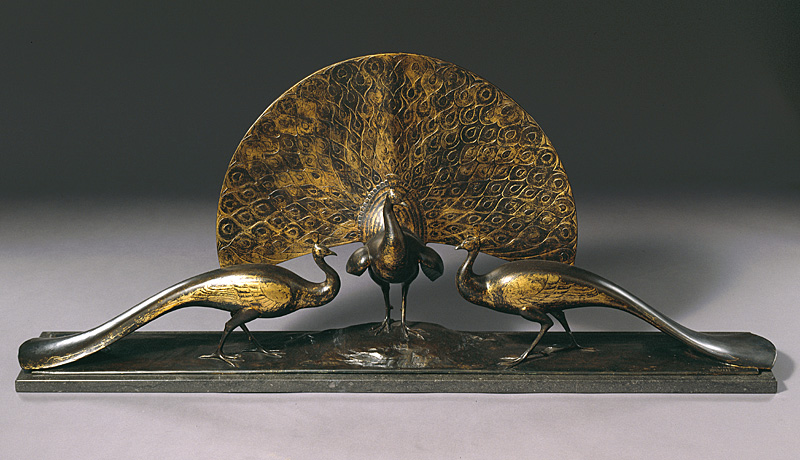
Peacocks
Gaston Lachaise
Lachaise entered the Ecole des Beaux Arts at age sixteen, where he began a promising career as a classically trained sculptor. He showed annually at the Paris Salon and twice finished second in the Prix de Rome competition. In 1905, however, he abandoned this path to pursue his future wife, Isabel Dutaud Nagle, who had moved to Boston. To fund his trip, Lachaise worked for a year in the studio of the Art Nouveau designer René Lalique. In 1912, he moved to New York, where he began working as an assistant in the studio of Paul Manship, while also becoming acquainted with the New York avant -garde. In the 1920s, Lachaise became a contributing artist to the journal "The Dial," which featured the writings of T.S. Eliot, e.e. cummings, and Henry McBride, and art by Pablo Picasso, John Marin, and Charles Demuth.
While best known for his figurative abstractions depicting his wife, throughout his career Lachaise executed a wide range of animal sculptures in which he aspired to "translate spiritual forces." The peacock has been a favorite subject in Western art since Roman antiquity and was particularly popular during the early twentieth century as a motif in Art Nouveau imagery. "Peacocks" reveals Manship's influence in its frontal orientation, emphasis on silhouette, simplification of forms, and use of gilding.
Artist
Date of Birth
(1882-1935)
Date
1918
Medium
Bronze with gilding; lost-wax cast in 1922
Dimensions
22 1/4 x 55 3/4 x 9 in. (56.515 x 141.605 x 22.86 cm.)
Accession #
1985.8
Credit Line
Gift of Mr. and Mrs. Lawrence Katz
Copyright
No known copyright restrictions
Category
Subject
We're so excited you're planning to visit PAFA!
Make time for art — visit us Thursday to Sunday.
Before reserving your tickets, please review helpful information about museum hours, accessibility, building access, and special admission programs.
If you have any questions, feel free to reach out to us at visitorservices@pafa.org — we’d love to help!
![[Seated nude]](/sites/default/files/artworkpics/1961_16_7_l.jpg)